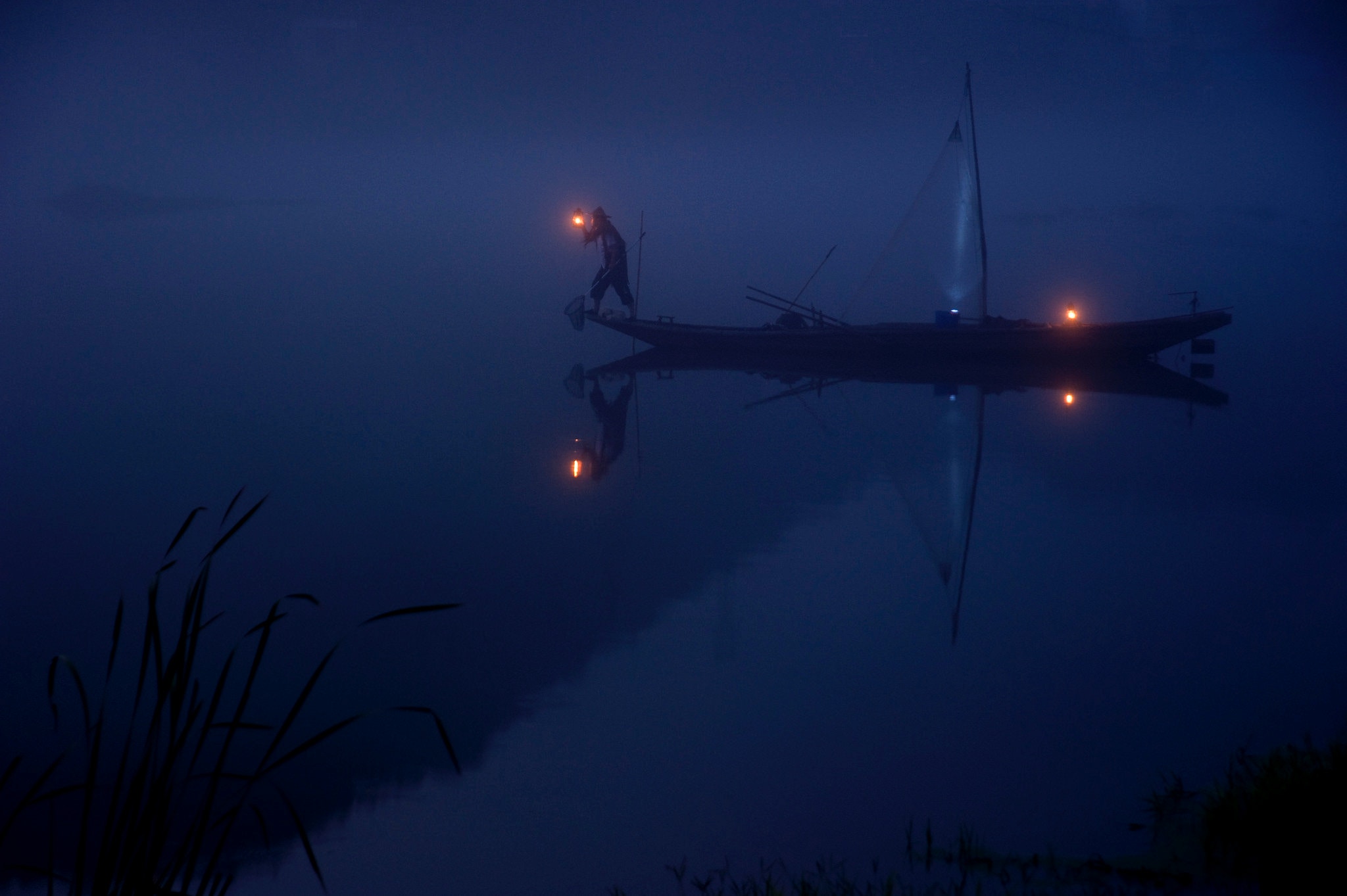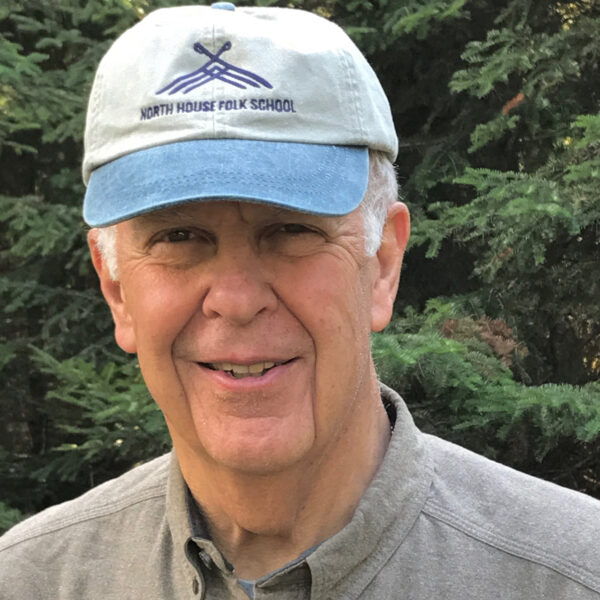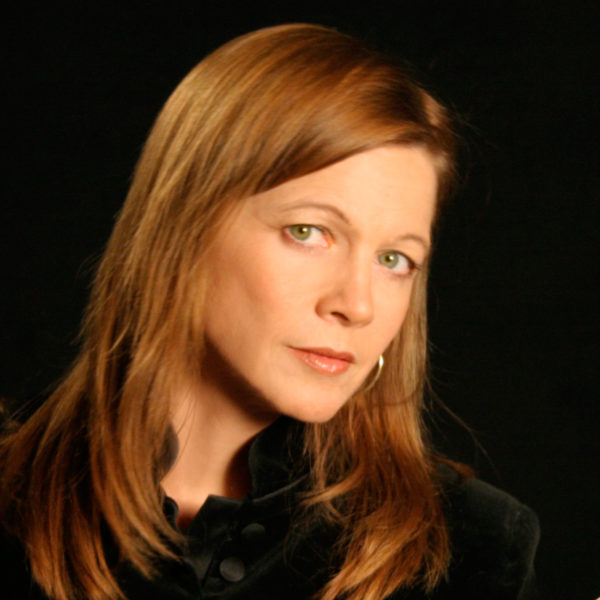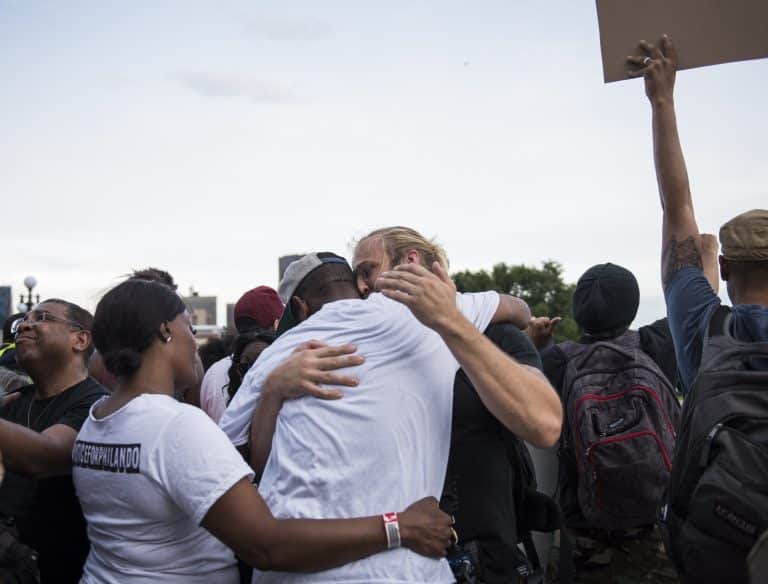
Look Well to the Growing Edge
Image by Chen Yichun/Unsplash.
All around us worlds are dying and new worlds are being born; all around us life is dying and life is being born. The fruit ripens on the tree, the roots are silently at work in the darkness of the earth against a time when there shall be new lives, fresh blossoms, green fruit. Such is the growing edge! It is the extra breath from the exhausted lung, the one more thing to try when all else has failed, the upward reach of life when weariness closes in upon all endeavor. This is the basis of hope in moments of despair, the incentive to carry on when times are out of joint and men have lost their reason, the source of confidence when worlds crash and dreams whiten into ash. The birth of a child — life’s most dramatic answer to death — this is the growing edge incarnate. Look well to the growing edge!
—Howard Thurman
During a decade of friendship and collaboration in words and music, the two of us have often talked about the endless dance of darkness and light that challenges and enriches everyone’s life.
Then came an April 2018 day when a dear friend of Carrie’s died in the early morning hours. Carrie had kept vigil at her bedside all night, singing and reading poetry as this good soul departed after years of living bravely and well with cancer. Later that morning, one of Parker’s good friends sent a video clip of the ultrasound she’d had that day, wanting to share the pure joy she and her husband felt about the new life that’s growing in her.
That afternoon, we talked about the way death and life, grief and joy, dance nonstop with each other around the world, day and night. It might not be a friend who dies; it might be a hope, or a work, or a relationship. It might not be a baby en route to being born; it might be a vision, an opportunity to learn or serve, or a small nudge towards who-knows-what.
To see life steadily and see it whole, we must find ways to hold the paradox of life-in-death and death-in-life. We can’t live lives of meaning and purpose if we succumb to the horrors of “apocalypse now” or fly off into the Aquarian fantasy of a day when “peace will guide the planets and love will steer the stars.”
Given what’s going on in the U.S. and around the world, it’s easy for some of us to think apocalypse 24/7 and fall prey to the anger and paralysis that comes with it. We live in a era when, to quote Howard Thurman, the “times are out of joint and [people] have lost their reason” while “worlds crash and dreams whiten into ash.” Without turning away from all the dying and grieving — which, rightly held, can redouble our commitment to life — we must learn to “Look well to the growing edge!”
When Howard Thurman calls the growing edge “the basis of hope in moments of despair, the incentive to carry on”, he’s not indulging a cheap fantasy. Those words came from a black man born into a culture of white supremacy, only one generation away from his grandmother’s experience as an enslaved human being. He stood in a long lineage of lived testimony to the fact that new life beckons to us even in the midst of horrors.
When someone like Thurman encourages people like ourselves — people of privilege, even power — to look to “the growing edge” for hope, we’d do well to listen, rather than giving in to a self-indulgent fatalism or cynicism.
So we’ll ask you the same question we ask ourselves: What’s the growing edge of your life? Some find it inwardly, as they reach for a deeper sense of meaning and purpose. Some find it with other people, at an edge where a relationship needs to begin, change, or end. Some find it in their work, as they look for ways to bring their gifts into deeper alignment with their souls’ imperatives and the world’s needs. Others find their growing edge in joining the struggle for justice in a broken world.
The growing edge is rich with the promise of new life. But in our experience, moving toward it is often as slow as the growth of a plant, so the process requires patient tending. We seem to go through three stages before we can begin to see and have confidence in the flowering.
The first is a barely-perceptible nudge toward “who-knows-what.” This often takes the form of feeling that we’re somehow out of alignment with our souls, our relationships, our work, the world’s needs. It’s a quiet, intuitive sense that we’ve lost our way: We made a wrong turn somewhere, or were forced to take a detour, or were barreling down a speedway without paying attention. That’s when we have to pull over, get out of the car, breathe, acknowledge that we’re lost — and resist the anxiety that compels us to look for the well-marked road and miss the clues that point us toward the heart’s imperatives.
In our writing, as in our lives, we’ve learned that we never begin a piece knowing where it will take us, and if we think we do, we’ve probably got it wrong. If we get anxious about our not-knowing, we’ll either fail to begin or will force a false outcome. It’s the writing itself — the living itself — that begins to clarify where our growing edge might be. We never know who or what we’re writing to. The most we can know is where or what we are writing from, and the best we can do is to write from a true place in ourselves.
The second stage might be called “arrival.” But in the place where we’ve arrived, it can be hard to tell whether this is an ending or a beginning. It may feel like an empty space where what came before is long-lost, and what’s to come has yet to show up. If we try to fill this void with make-work and other distractions because we can’t tolerate the ambiguity, we will miss the growing edge.
Our inner work is to embrace the paradox that new beginnings are also endings; favor “beginner’s mind” over our past “expertise;” and face into the risk that what we find out on the edge of our lives may be something we don’t know how to work with. At this point, it’s easy to look behind us and romanticize the sense of security we had back in the day, forgetting that it was a sense of lostness that set us on the path to this strange new world.
The third stage might be called “surrendering to new life.” That may sound like a piece of cake: What’s not to like about new life? But there are times when it feels easier to relapse into some form of death-in-life. The situation we thought we wanted to grow beyond may be killing us, but at least we know the ropes — while the new and the strange may bring challenges we can’t imagine, let alone surmount. As the Guatemalan poet Julia Esquivel puts it, we are often “threatened by resurrection.”
Both of us have experienced situational depression in varying degrees. We know how seductive it can be to get stuck in shadowy places — or in the situations that lie behind them — because with the familiar comes a perverse form of comfort. What’s helped us reach for new life has been the knowledge that the only way out is in and through.
The deeper we’ve been able to go into our hardest experiences, the better we’ve been able to understand their root causes — and those causes often have a “befriending” intent. They want us to take our lives seriously enough to ask, “What’s driving this, what steps do I need to take to stop succumbing to it, and do I love my life enough to try to save it?”
Is it naïve to invest hope in the growing edge — the kind of hope that compels us to look for and try to live into it? Not if you trust the testimony of Howard Thurman.
There’s no comparison between a chained body, as in the enslavement that Thurman’s grandmother knew, and a chained spirit. But the history of cruelty done to his family did not rob Thurman of hope. That itself is a hopeful fact for those of us whose spirits may be held captive to other forms of cruelty, the kind that result from conspiring in our own diminishment.
Even on our darkest days, Thurman can inspire us to say, “There’s new life on the other side of this, and it’s calling me forward to the growing edge.”
“The Point of Arrival”
by Carrie NewcomerAt first it felt like a bitter pill,
A rubber band stretched until it snapped,
Sitting cross-legged on the floor,
Looking at my empty hands,
Wondering what would become of me,
Now that there is nothing else
But surrender.First we fold in,
And then we open out.
Acceptance is a kind of ending
And yet, it is the point of arrival.This is where I lay down
What can no longer be carried.
This is when I see my hands
Which at first felt so empty
Are filled with
Hallelujah.
AN INVITATION: Would you like to explore “the growing edge” with us and a growing online and in-person community of seekers? Please visit our new project, The Growing Edge, at NewcomerPalmer.com. You’ll find information about retreats, online conversations, song-and-spoken-word events, several free downloadable songs, and other music and books — along with an invitation to join our mailing list.



Share your reflection